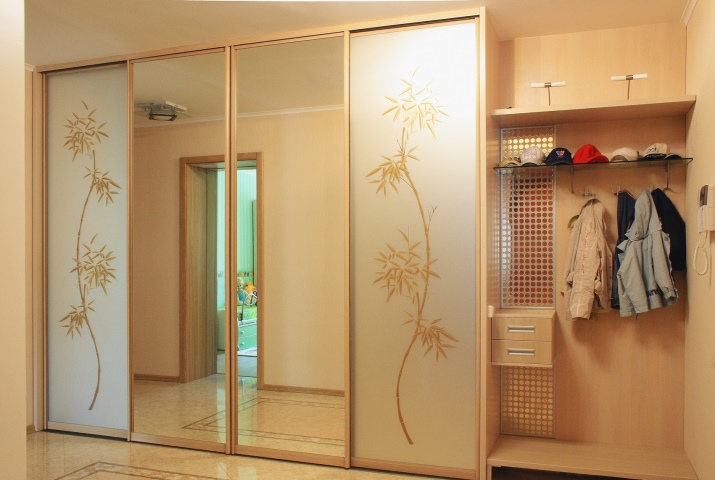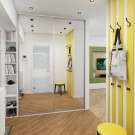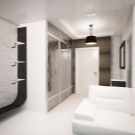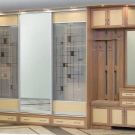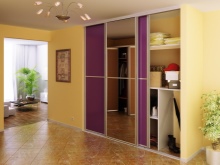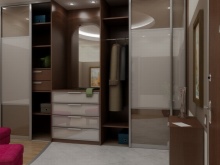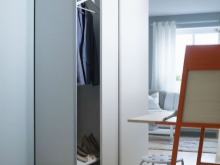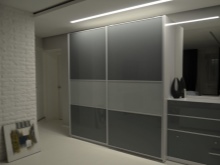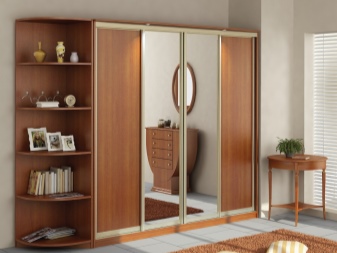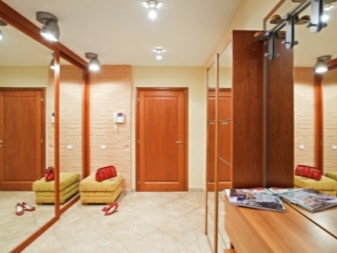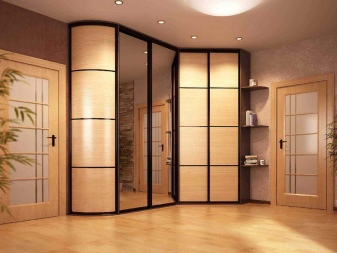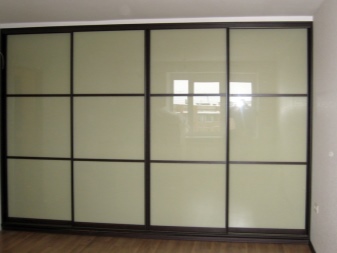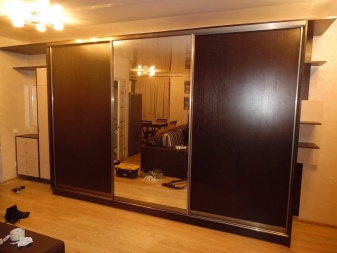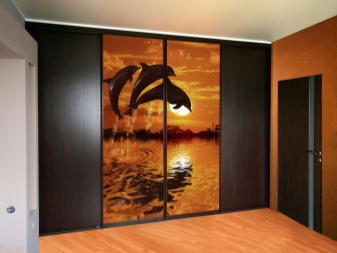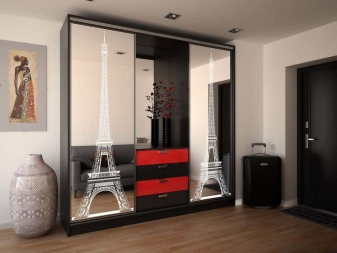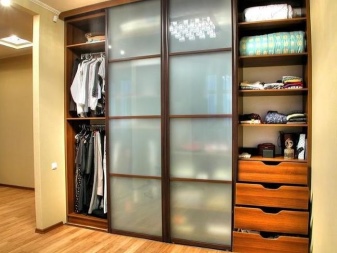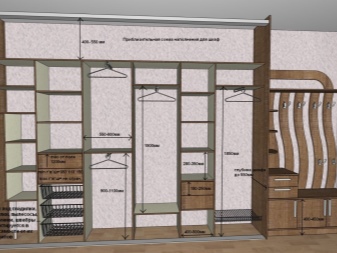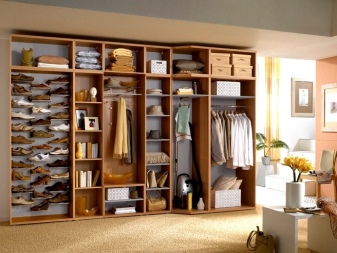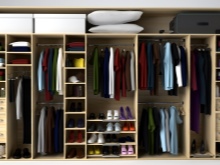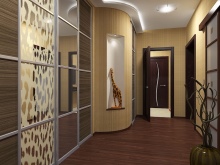Long wardrobes in the hallway

Hallways in the apartments are often absent as a separate room and are part of the corridor that connects the rooms. There is a problem of effective use of space, the allocation of space for outerwear and shoes. Long wardrobes cope with these tasks.
Purpose and dignity
Wardrobes in the hallway are used to store clothes and shoes. Often there are large-sized items: an ironing board, a vacuum cleaner. In the upper hard-to-reach sections store off-season clothes, suitcases, rarely used things.
The compartment saves space due to sliding doors, allows the use of uncomfortable, narrow, space in the apartment, maximizes the use of niches.
An individual project, as a rule, takes up space from the floor to the ceiling and accommodates more things.The system of shelves, hangers, baskets and drawers, tailored to the needs of the customer, adds order in the wardrobe.
Kinds
Cabinets can be built-in and cabinet. The first option is designed for a specific place in the interior, such as a niche. The walls, floor and ceiling of the niche become the walls of the cabinet. That is, the design will consist of a door unit and a shelf system. Such minimalism is needed not only to save, but also to increase the internal volume.
- The built-in construction requires that the walls do not crumble when drilling and retain weight. Fragile plasterboard walls will not work.
- Cabinet cases are more often ready, serial. They have a complete set, walls and doors, they are easier to move, sell.
Material and accessories
Frames and walls are made of two basic materials: chipboard and MDF.
Chipboard - chipboard. This material is cheap, but not environmentally friendly: it contains harmful formaldehyde, which constantly evaporates. To reduce the negative impact, choose furniture from chipboard E1 safety class. And pay attention to the surface and the ends of the shelves - it is desirable that they were completely laminated, without open cuts and seams.
MDF is also produced from shredded wood, but it uses safe ingredients. It is denser than chipboard, does not crumble when drilling and replacing fasteners. Furniture made of MDF is more expensive, but will last longer.
Details of these materials are laminated with films of different colors and textures. This - and the protection of the tree from moisture and crumbling, and a variety of design solutions.
The doors, except for chipboard and MDF, are made from glass, usually tinted.
Wooden bases of doors are laminated, trimmed with bamboo, veneer, mirror coating. Mirrors on the facades of cabinets visually increase the hallway.
Glass and mirror facades are decorated with images made using various technologies. It can be like photo printing over the entire area, like photo wallpaper, and small decorative elements. All this gives room for the manifestation of individuality and creative experiments.
Fittings coupe - fasteners, guide profile, on which the doors move, parts of the running mechanism: rollers, stoppers, closers. There are also front fittings, cabinets have door handles and drawers.
Sliding door guides are made of steel or aluminum.Steel profile is cheaper, but will last about 7 years. Aluminum serves up to 25 years.
The sliding mechanism is attached either to the bottom rail (lower support), along the floor, or to the top, under the ceiling (suspended). For the second, more reliable method, careful alignment of the ceiling, rigidity and stability of the cabinet structure are required.
Filling
To create your own convenient storage system, the following elements will be useful:
- shelves and partitions,
- clothes rods on hangers,
- drawers,
- sliding baskets,
- shoe shelves
- pantyles,
- tie holders,
- belt holders
- pantographs - mechanisms that raise and lower rods with clothes from the upper tier;
- interior lighting, responsive to door opening.
To design the filling cabinet, it is recommended to carry out a little preparatory work. Decide what things will be stored in the closet. For clarity, collect and decompose them as they will be stored. So you can get an idea about the desired height and width of the shelves, the length and height of the placement of the rods, the need for other elements. This information is reflected in the scheme,which will be needed when you buy in a store or order in the workshop.
Selection features
Having decided on what will be in the closet, start searching for options. Many online stores have calculator constructors that calculate the approximate cost of a variant based on the data entered. When calculating it is worth considering that:
- The depth of the cabinet is usually not less than 60 cm. This is due to the length of the hangers. In a narrow cabinet, hangers for bars are missing or are installed perpendicular to the doors.
- The most convenient is the middle tier of the cabinet, at a height of 65 to 150 cm. Rarely used items are stored in the lower and upper tiers.
- The height of the free space under the bar for clothing not less than 150 cm.
Based on the preliminary calculations, choose a store or workshop that offers a lower price, better service conditions or the most interesting design.
